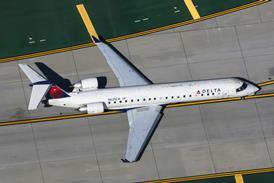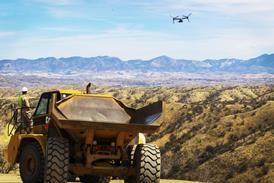GRAHAM WARWICK / WASHINGTON DC
Two setbacks for entry-level leader reshape the small turbofan sector as P&WC moves in to power Mustang
Williams International virtually invented the small turbofan, but the past two months have seen a dramatic shift in the market. In November the secretive, privately held company was dumped unceremoniously as engine supplier for the Eclipse personal jet. Then, earlier this month, Williams's lock on the entry-level business jet market was broken by industry powerhouse Pratt & Whitney Canada.
Of the two events, losing the competition to power Cessna's Citation Mustang to P&WC was probably most the damaging to Williams. But being ousted as engine supplier to Eclipse was possibly more disappointing.
Since it produced the first cruise missile engines, Williams has led the world in the development of small turbofans. At just under 800lb thrust (3.6kN), the EJ22 for Eclipse was to be the smallest certificated turbofan. Based on the FJX-2 developed under NASA's General Aviation Propulsion programme, the EJ22 promised a revolution in price and performance that would make jets as affordable as high-performance pistons.
Eclipse Aviation terminated the Williams contract in November after just one flight of the Eclipse 500 prototype. The company decided the EJ22 was "not a viable solution", because of schedule delays and technical problems. These included difficulty starting the engine and achieving adequate thrust at the high density altitude of Eclipse's Albuquerque, New Mexico, base.
The aircraft's thrust requirements had also grown beyond the capability of the EJ22. The two candidate replacement engines Eclipse is considering are in the 1,000lb thrust class, allowing for weight and performance increases. Price will also increase, inevitably. Although Eclipse says the price differential between the EJ22 and the candidate engines is not as much as some assume, the aggressive price tag on the Eclipse 500, deliberately set to stimulate high-volume sales, will be hard to maintain. Whether this will impact Eclipse's tally of over 2,000 orders remains to be seen.
Williams has remained taciturn since its contract with Eclipse was terminated. The company is expected to continue development of the EJ22, likely now renamed the FJ22, because of the interest the engine has generated from other quarters. With the Eclipse's exclusivity now voided, other manufacturers could step forward - provided Williams can overcome its technical problems and certificate the engine.
Adding the FJ22 to its commercial product line would be a boost for Williams. The company has had great success with its first commercial engine, the FJ44, developed with assistance from Rolls-Royce. The FJ44 powers no fewer than five entry-level business jets now in production or development - Cessna's Citation CJ1, CJ2 and CJ3, Raytheon's Beech Premier I and Sino Swearingen Aircraft's SJ30-2.
As recently as last year, Williams appeared to confirm its leadership of the entry-level sector by being selected over P&WC to power the stretched CJ3. It was the first competition in which the Canadian company offered its planned PW600 small turbofan. In the end, Cessna elected to stay with the incumbent CitationJet engine supplier, but promptly launched another competition, this time to power the Citation Mustang.
The Mustang is Cessna's response to the demand made apparent by Eclipse and, although a larger, more expensive aircraft, is the cheapest jet yet to emerge from any of the major manufacturers. To power the aircraft, Williams offered its FJ33 - a scaled-down FJ44 - against P&WC's PW615F. The Canadian engine was selected this month, formally launching the PW600 programme and providing Williams with its first real competition in the small turbofan market.
Another family member, the PW610, is one of the engines being studied by Eclipse, and the jury is out as to whether Cessna's selection will boost P&WC's chances of powering the personal jet. Instead, the decision may yet deliver the competition to the other contender, Honeywell, which is trying to enter the small turbofan market with a derivative of its long-established, but much-improved LT101 turboshaft.
P&WC had avoided the entry-level market until the Mustang, with its Citation credibility, came along. Now the company expects other applications for the 1,000-3,000lb-thrust family to emerge, and not just for the turbofan. Turboprop and turboshaft versions are on the drawing board. The fact that Honda, among others, is seriously eyeing the small turbofan market also influenced the company's decision to bid aggressively for the Mustang programme.
Whether the Eclipse 500 ends up with the engine it needs - and whether either of the major-league contenders can construct a business case for working with an entrepreneurial, unconventional start-up like Eclipse - the company, its aircraft, and its development challenges have changed the shape of the small turbofan market forever.
Source: Flight International























